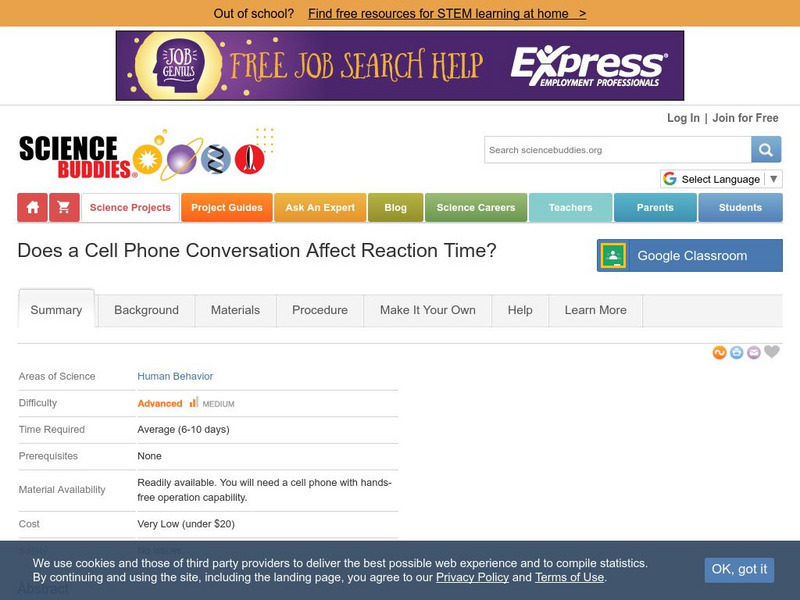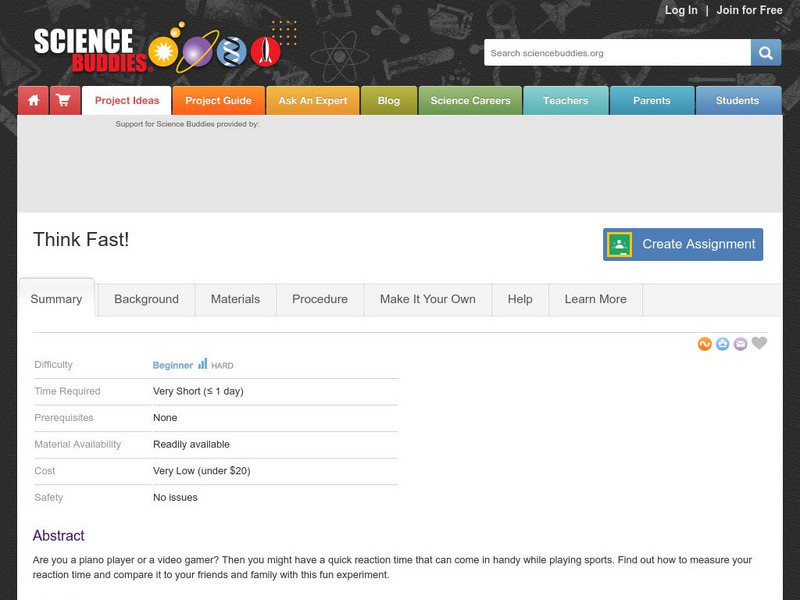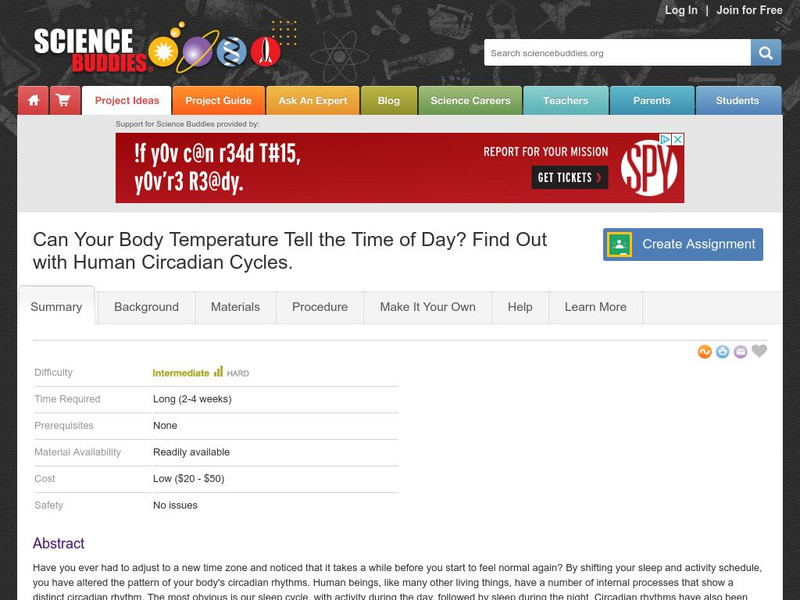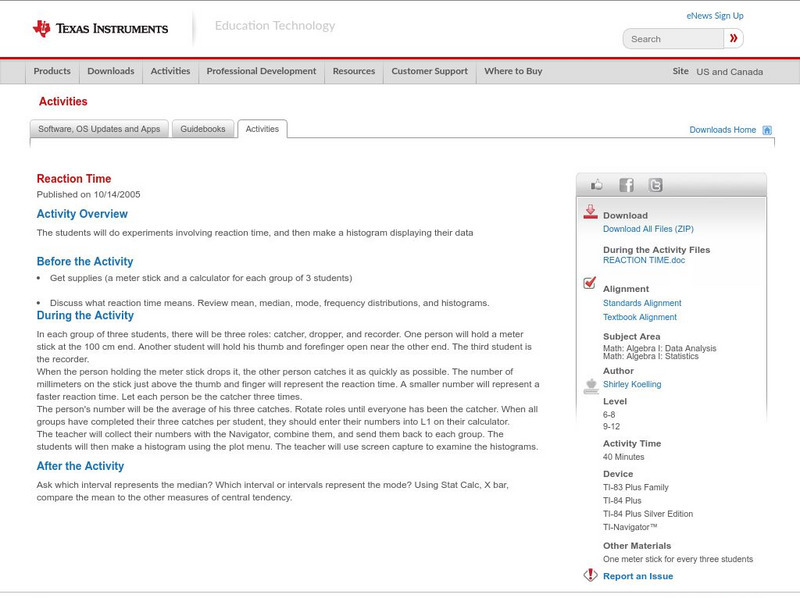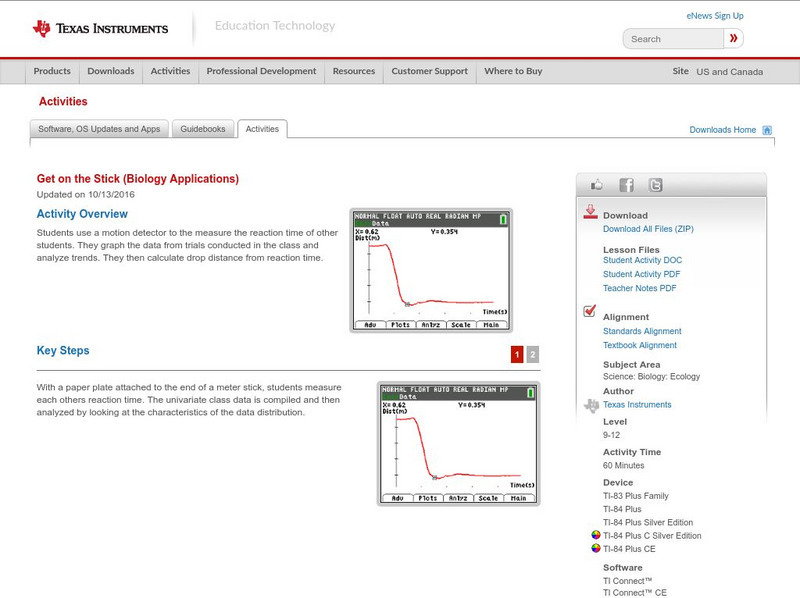Curated OER
Reaction Time 2: Zap!
Students explore critical thinking by conducting a reaction time experiment. For this human brain lesson, students utilize a timed Internet worksheet activity to research how fast their brain works when answering questions. Students...
Curated OER
Reaction Time
Learners record reaction time data and calculate minimum, maximum, mean, median, and mode. They participate in a class reaction time activity, observe and conduct an online experiment, and discuss and analyze the activity results.
Curated OER
Reaction Time
Third graders review important vocabulary to explain measures of central tendency and reaction time. In pairs, they measure reaction time of dropping and catching a ruler. Data is collected after repeated catches and information is...
Curated OER
GET OFF THE COUCH AND GET BUSY
Students perform at five fitness stations a day for a week. Each fitness station be based on a benefit of vigorous physical activity.
Curated OER
The Math Reaction
Students use the reaction time to figure out problems. They use the following example to get them started with reaction time: the edge of a ruler is placed near a person's thumb and index finger and, without warning, the ruler is...
Curated OER
Reaction Time
Young scholars investigate their reaction times for grabbing a dropped ruler after discussing reactions times to other events such as moving your foot from the gas pedal to the brake. They drop the ruler from a sent height and record the...
Science Buddies
Science Buddies: Does a Cell Phone Conversation Affect Reaction Time?
Does talking on a cell phone make one a more dangerous driver? Here is an experiment you can do to investigate whether reaction time is adversely affected by a simultaneous phone conversation.
Science Buddies
Science Buddies: Think Fast!
Are you a piano player or a video gamer? Then you might have a quick reaction time that can come in handy while playing sports. Find out how to measure your reaction time and compare it to your friends and family with this fun experiment.
Science Buddies
Science Buddies: Can Your Body Temperature Tell the Time of Day?
If you have ever had to adjust to a new time zone, you have noticed that it takes a while before you start to feel normal again. By shifting your sleep and activity schedule, you have altered the pattern of your body's circadian rhythms....
Science Buddies
Science Buddies: Think Fast: Do Video Game Players Have Faster Reaction Time
Are you an avid video game player? Do you think this helps you have fast reaction times? This Science Buddies science project lays out an experiment to help you test your hypothesis. The Science Buddies project ideas are set up...
Science Buddies
Science Buddies: Fast Food: Can Peppermint Improve Reaction Times?
Did you know that some teachers give their students a peppermint candy on state testing days? Is it to give the kids sweet-smelling breath? Or are the teachers hoping for something more on the important testing day? In this human biology...
TeachEngineering
Teach Engineering: Pupillary Response & Test Your Reaction Time
Students observe and test their reflexes, including the (involuntary) pupillary response and (voluntary) reaction times using their dominant and non-dominant hands, as a way to further explore how reflexes occur in humans. They gain...
University of Washington
Neuroscience for Kids: Reflexes
Site provides interactive activities to use in the classroom to test one's reflexes. Also includes more reaction time experiments as well as links to more fun activities.
Texas Instruments
Texas Instruments: Reaction Time
The students will do experiments involving reaction time, and then make a histogram displaying their data.
Texas Instruments
Texas Instruments: Get on the Stick
In this activity, students' use a motion detector to the measure the reaction time of students. They graph the data from trials conducted in the class and analyze trends. They then calculate drop distance from reaction time.
PBS
Pbs Teachers:reaction Time
Employ techniques of scientific observation to test and measure your reaction time. Repeat the test several times to make conclusions about whether the time between a stimulus and a response can be improved with practice.








